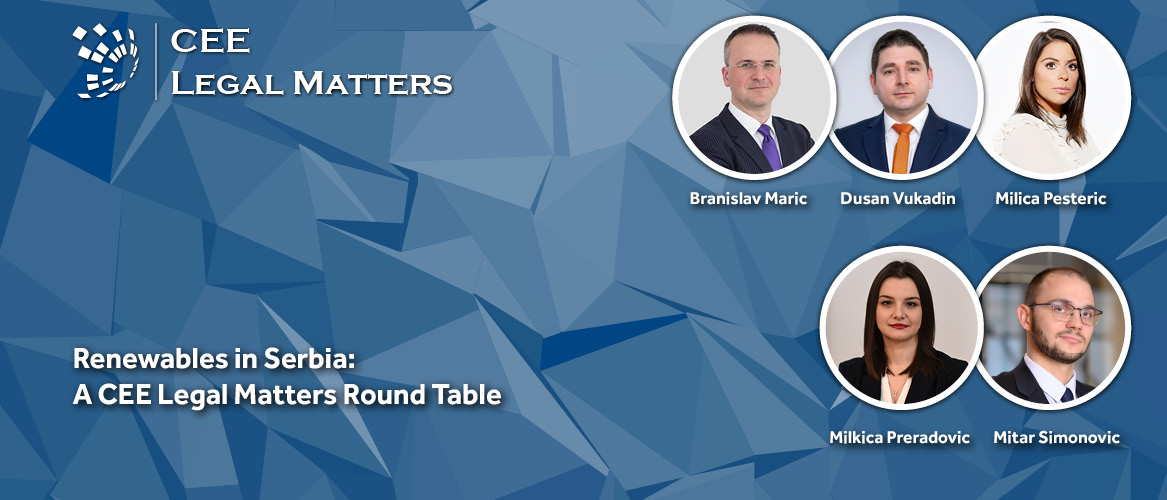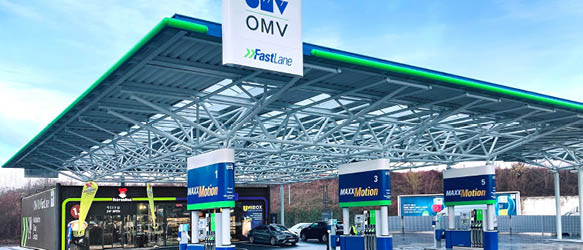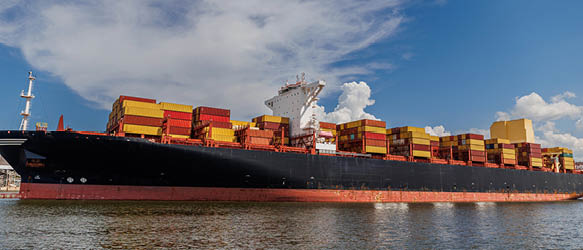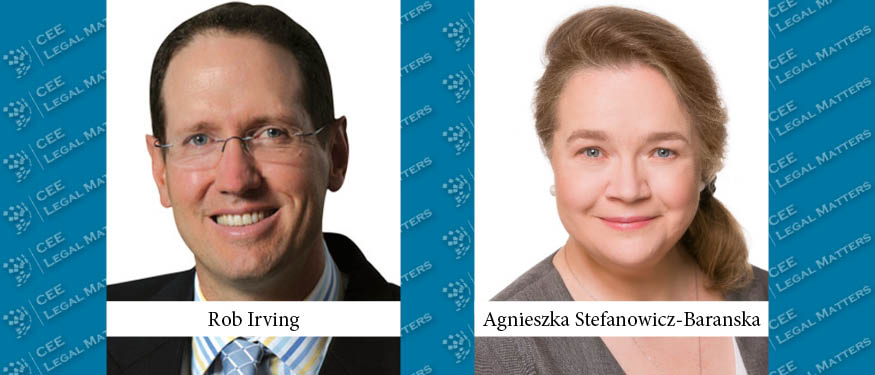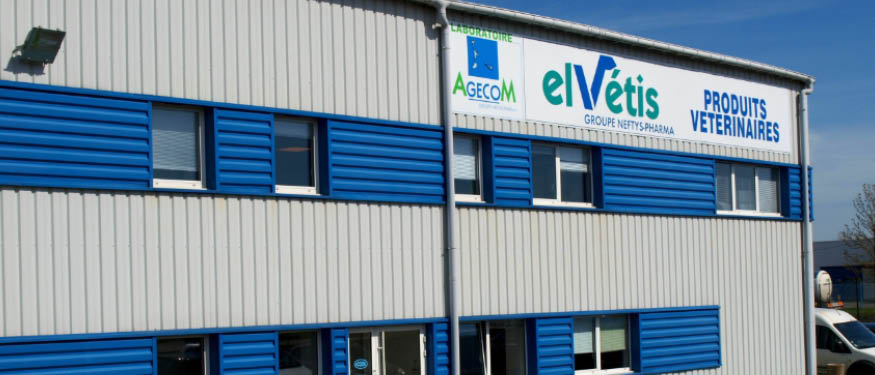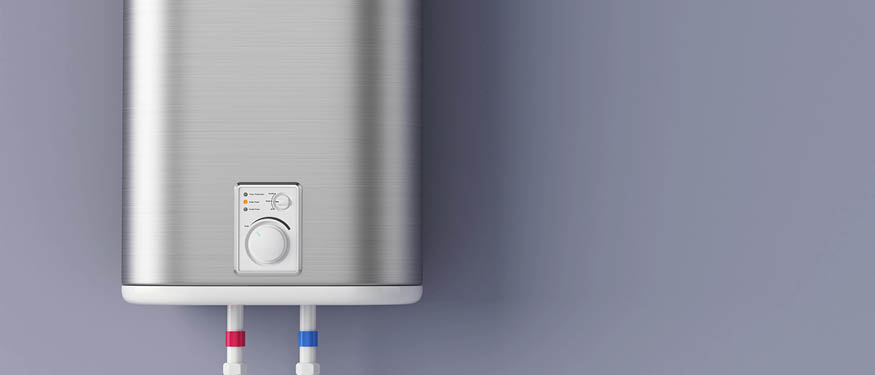On March 10, five leading lawyers in Serbia sat down for a virtual round table moderated by CEE Legal Matters Managing Editor Radu Cotarcea to discuss the current state and outlook of the renewables market in Serbia, with topics covered including the goals set and the country's National Renewable Energy Action Plan, the challenges presented by Russia's invasion of Ukraine and the "conservative wave" in the country, the main players and the deals pipeline in the sector, the availability of green financing for renewable projects in the country, as well as the biggest regulatory hurdles currently still affecting renewables in Serbia and the participants' wishlist of what could be done to remove some of these obstacles.
Participants:
- Branislav Maric, Managing Partner, Kinstellar Belgrade Office
- Dusan Vukadin, Senior Counsel, Milosevic Law Firm
- Milica Pesteric, Senior Associate, Bojovic Draskovic Popovic & Partners
- Milkica Preradovic, Partner, ODI Law
- Mitar Simonovic, Attorney at Law, NSTLaw
You can also listen to the conversation as a podcast below.
CEELM: Talking about renewables in the Serbian market, it would be good to have a bit of context as to the driving forces behind it. What are some of the tangible targets set in Serbia at this point? Are they achievable?
Simonovic: Serbia, of course, has an intent towards the EU. It should also be aiming at very high percentages of emissions reductions. With Serbia as a signatory of the Paris Agreement, with the most recent Green Agenda for the Western Balkans Sofia Declaration – it tends to be moving at the pace at which it’s supposed to. However, looking a bit at the data we have, especially for 2020, it was below the expected reduction and renewable percentage it wanted to get to. Basically – instead of the intended 27% it was, I think, in the range of 22%. So, of course, it’s not at all bad. Serbia has one-third of its energy coming out of the Djerdap plant and other clean sources. According to Eurostat, at the end of 2020, Serbia was closer to the threshold it was supposed to reach, providing about 26% [renewable energy] and the goal for 2040 is 40% from renewables.
So that’s where we stand. Is it reachable? It’s still very much dependent on the agenda and strategy that are to be adopted – with the projections for 2040 and the goals for 2030. When we’ll see that strategy, which is still being drafted, we’ll know much more and see what kind of expectations are provided for all market participants to strive for.
CEELM: Milkica, since Mitar pointed to the draft strategy, what do you expect of it?
Preradovic: Serbia adopted the National Renewable Energy Action Plan for 2020 defining the target of 27% of renewable energy sources in gross final energy consumption. I think this is an ambitious target. Official data shows we have a large percentage of energy coming from renewables. But it’s important to note that most of that energy comes from the same source. Almost 30% of electricity comes from hydro potentials – with other renewables, actually, on a very low level. From solar plants, for example, it’s a very low percentage of the energy that’s coming in. I’m not sure how this will change in the future. So that’s the main reason why I think these targets are ambitious at the moment. Also, I’m not sure if the official data is the same in practice.
CEELM: Branislav, what is your opinion – are these numbers accurate? And what is your explanation for them?
Maric: The numbers are accurate in terms of what the plans were. But where we stand is actually not great. When we exclude hydro potential, which has been in the blend for decades in Serbia, the total capacity of new renewable sources, which were rolled out in the last eight+ years, is approximately 4% of the entire output. So that gives you an idea of where we are in terms of new renewables we’ve been trying to develop. So that’s far away from where we want to go.
I think that last year started in a very positive sense, with legislative changes (that we’ll be talking about in due course) happening at a quick pace. And the year was promising to be a renaissance for renewables in Serbia after three or four years of stagnation. However, the end of the year resulted in a major energy crisis, not only in Serbia but worldwide, which had a severe impact on Serbia due to certain problems with our production capacities (thermal power plants). And that resulted in another conservative wave in Serbia against renewables – especially among the incumbent state-owned enterprises, which deliver coal-based electricity to the grid. So we started this year with a sour taste in our mouths, in terms of the progress and the possibilities for renewables. And then we had another tectonic change, on January 24, when the geopolitical situation changed dramatically due to the conflict in Ukraine. Which is now having a severe impact globally on the energy formula. The EU is obviously trying to introduce new plans to further foster renewables throughout the EU. I think the pressure will remain on Serbia to continue on its path, with the introduction of additional resources. But this is not going to be without its problems in practice.
Pesteric: I would like to add, on energy policy, according to the new energy law, the Integrated National Energy and Climate Plan is envisaged as the strategic document to be enacted. According to the latest input from the ministry – they are a bit pushed by the decarbonization goal, so they were in a hurry to enact all the legislative framework in this field – I think they are going to wait on the integrated national plan. Because it really takes time to produce a good plan. And I think they have several options in that regard. According to publicly available information, the first draft should have already been in public debate, to hear the stakeholders on this.
CEELM: Dusan, do you have the same sense of a “conservative wave” in the country last year putting a damper on things? Can you elaborate on how, specifically, it manifested and led to suboptimal results?
Vukadin: Regarding the things said earlier, I agree 100%: currently, there are a lot of state companies and agencies pushing back against renewables and renewable energy, because of the large costs that they would probably have to cover as a result of these new incentives being introduced. But I don’t think this is too ambitious a plan, as the ministry and the government are pushing toward renewable energy. I think these goals could be attained.
Regarding the integrated national plan – I’m really hoping that it will soon be submitted to public debate. I understood there would be three possible strategies. They’ll be talked about. And after that, we will see in which direction Serbia is going. A lot is depending on this integrated national plan.
Maric: The whole situation was triggered by certain winter events, in November – we were close to a blackout, which fortunately didn’t happen. However, a large percentage of our production capacities were kicked out of the grid: it was not possible for them to produce electricity anymore. The government and state-owned enterprises were forced to work on their arrangements to import large quantities of electricity at very high prices – even fetching EUR 400 (or more) per megawatt-hour, which is much more than is usually the case. As a result of that, state-owned enterprises started to suggest that the whole strategy to integrate new renewable resources was problematic. They started to complain that the balancing issue was at the core of the problem. And that balancing capacity requires extra cost, which has not been properly factored into the planning. By way of example, if we’re to have 8,000 megawatts of renewable capacity on the grid, at some point in the future, that would require more than 2,000, maybe 3,000, megawatts of balancing capacity, which needs to be produced by sources other than renewables. Because renewables are inherently unstable, so you need other sources to balance these out. The state-owned enterprises are suggesting that this is currently not feasible, and there should be proper projections to enable that, in due course. Also, as I said, they are pointing to the cost of this exercise.
There has been basically a war of words, to say the least, between state-owned enterprises on one side and the ministry and government on the other side. This seems to be somehow suspended at the moment, until, I guess, the end of the election cycle. So, it’s to be continued. And the hostage of this situation is the fact that the rulebook or decree on balancing – which is one of the most important remaining pieces of legislation to implement under the new legislative framework for renewables – is still outstanding. It’s the major battlefield between the state-owned enterprises and the government. As well as the private sector, which is involved in renewables in Serbia.
CEELM: Milica, I saw you were nodding your head in approval. Do you have any bets you want to place as to what would happen, post-election?
Pesteric: As Branislav pointed out, yes, we don’t have a complete legislative framework yet. Balancing is missing. That, I would say, is kind of a problem. On the other hand, the Serbian Government is currently in its technical mandate, and I don’t think we can expect anything after the elections – not even after the new government is set. What we can expect, afterward, is the completion of the legislative framework and, hopefully, to see the first auctions finally organized. As a reminder, those were planned for January, after the last set of bylaws was enacted in December. However, we didn’t have the opportunity to see the first auctions yet.
CEELM: We haven’t actually looked at the current breakdown and map-out of the market. Can you give us an overview of the main players in the market, at the moment? Is it primarily locals or internationals?
Preradovic: Based on my current information, it seems like foreign investments are dominant at this moment. And that international companies investing in renewables in Serbia have some dominance in the sector. As my colleagues have already said, we have the state-owned Elektroprivreda Srbije (Public Enterprise Elektroprivreda Serbia) – which definitely is one of, maybe even the most significant local player on the market. They produced some green energy in the past three or four years – but still, I believe international companies and foreign investments have dominance in this field.
Simonovic: This does seem to be the establishment on the market, for now. It’s important to restate what Branislav said earlier, that the hydro potential of Serbia has been utilized for three decades – it remains most of the renewable market share – that belongs to Elektroprivreda Srbije, as Milkica pointed out.
The new investors are in search of their market share on new renewable sources. Investments come predominantly from Abu Dhabi (which is now getting into investments here), CVP Global, Electrawinds, and other companies which are getting into the pellet and biogas renewable energy market that’s starting. These are all investments on a small scale, going up and demonstrating that there is room on the market – it just really needs the preconditions to be met, which ties into our previous point on legislation.
Vukadin: I agree it’s mostly foreign investors, but there are some consortiums or partnerships, like MK with Fintel, which have already constructed a couple of wind farms and are planning a lot of large projects in the future. For now, besides hydropower plants, wind is the most used source for renewable energy production. There are a lot of planned projects but, currently, only three really big ones for wind power. So, in general, not so many domestic players in the market.
CEELM: Branislav, a two-pronged question: do you also see a lot of planned investments and why do you believe they are not yet coming to fruition – what are the blocks on that? And what is your take, why is there less activity from the local investors?
Maric: In terms of the activity so far, I fully agree that historically foreign investors have been the driving force behind the investments in the renewables sector – in the wind sector, with the exception of MK as a joint-venture party with Fintel, others were exclusively foreign. However, in this new wave that started to take visible shape last year, when the legal framework was upgraded, it was clear there are a number of domestic investors that were initially starting to design projects. They were, of course, willing to team up with the foreign investors attracted by the very positive change that started happening last year, when the new framework started to be introduced. So I think there was a more significant domestic blend of investors in this new wave.
What they are waiting for are these auctions. As mentioned, the initial optimistic plans were that the first auctions were going to take place towards the end of the third quarter and the beginning of the fourth quarter, last year – which didn’t happen, unfortunately. As of yet, we don’t know when they might be expected. We also have to be realistic and say that, currently, the planned quota for these auctions is 400 megawatts. So, in terms of overall capacity, we’re not talking about a massive inflow that is imminent. My understanding is that, among the investors that we currently have on the market, with projects in different stages of completion, not everyone is actually targeting these auctions. There is interest, of course, but there are a number of projects that are in the pipeline at stages that will not be qualifying for the auctions if they happen in the near term.
Also, one question mark that I see, in terms of investment potential, is what the role of state-owned enterprises is going to be. Because last year they were publishing ideas to roll out more than 2,000 or 2,500 megawatts of renewables – we’re talking about EPS, Electric Power Industry of Serbia, that’s what they were projecting, as their own investments – and they were even planning, reportedly, to team up with some of the private investors that have been developing some larger projects in the meantime. So, that’s very interesting. Take these with a grain of salt, as I think these enterprises lack transparency. So, it’s questionable which of these plans are based on some realistic projections. But we cannot exclude the possibility that state-owned enterprises will weigh in more strongly, in the coming period, in the arena of renewables.
Preradovic: Both Branislav and Dusan mentioned the MK Group (Serbian holding company MK Group) as one of the most significant local players. Only one thing I’d like to point out – concerning their business principles on renewables – one of their companies, Sunoko (company, member of MK Group), decided to use sugar byproducts to produce electricity. I believe that’s a good example for investors and companies in Serbia to make connections between their main business activities and engaging in the renewable market to produce green and clean energy instead of using other sources.
CEELM: What is the outlook on renewables transactions? Is the market still in a development cycle rather than looking at trading assets?
Simonovic: Yes and no. Basically, the market has been developing. The financiers of the plants are often hard to trace. But it’s mostly UniCredit, the European Investment Bank, the EBRD, and the IFC. All of these weigh in, have given, and continue to give loans. The market hasn’t been as active as it’s supposed to be – but it hasn’t remained inactive. Especially in regard to the preparation of share transfers. There has been interest among market participants. It’s not frozen, but perhaps at a temporary standstill – bearing in mind all the activities in the last few months: the dialogue between EMS and EPS and everyone else, as Branislav mentioned. So, having in mind the recent dialogue and occurrences, I believe that there will be a lot more market activity and I wouldn’t say that there hasn’t been any.
Maric: The activity was significant last year, especially during the first three quarters. There were a number of transactions that were taking place. All in preparation for the opening of auctions, which was expected at the time. Generally, optimism is still present and relatively high among renewables investors. They believe, especially based on the most recent events globally, that renewables will continue to have even increasing importance, and that there will be an even bigger push for renewables, inside and outside of the EU, in order to replace some of the conventional sources – especially gas coming from Russia. So, I think that, generally, the interest will continue when it comes to these investors. We even saw some transactions taking place, in the course of last year, for projects at the very-very early stages. So basically the incumbent investors were aiming to team up with co-investors, for the initial development of the project, to prepare for a bigger transaction. So, activity was significant in that respect, and I think it will continue in due course.
CEELM: What have been the main elements of support from the government towards renewables in the past? And are they still active at the moment?
Pesteric: A few points on the previous discussion: when we talked about the problems current projects or future investments are facing, I think that the overload of the transmission system is a problem – the grid is overloaded. It currently has several thousand applications. Not all of them are going to be developed and become electricity producers. But still, the transmission system operator needs to do something in order to continue operations – which also affects investors and future developers.
Also, the support of the Serbian Energy Agency needs to be different in the future. They had very low maximal prices for these auctions that never took place, which investors and developers were not quite satisfied with. These are the things that can stop the whole process.
Finally, concerning the financing – given that feed-in tariffs are passed – I don’t think that all banks are willing, from a risk management perspective, to provide financing, given the current energy crisis and the very high prices on the market. I don’t think the prices are predictable, in terms of their financing, based on other models than feed-in tariffs. Of course, most of the banks are part of international groups, so they will adjust according to the best practices of foreign banks. But this is also one of the challenges.
Moving back to the incentive measures, according to the new renewable laws, the incentive measures are switched from feed-in tariffs to feed-in premiums. That’s the new thing. The incentive period is prolonged to 15 years, from the previous 12. And there are also priority connections to the grid, balancing responsibility, and other incentives. This is really a good thing that [developers] finally got, with the renewable laws. We were waiting for years, we were in some kind of investment and legislative limbo for several years. Also, we have the new quota, which is 400 megawatts, only for wind. Because it seems we don’t yet have big enough solar photovoltaic projects. That’s the short of it.
Simonovic: We can divide them into parts. All of them have some driving force behind them and all of them have a great idea. They are pretty common everywhere else. The new law instigates market premiums, the system of feed-in tariffs – all related to the price of energy. However, what’s most important – the main wrench in the process – is the issue of balance responsibility. The EMS has expressed serious concerns about taking over all of the energy that is produced from renewables – their main concern is that the capacity of the grid will not hold. So, the main challenge, perhaps, going further is getting this cleared up – to balance responsibility and takeover of balance responsibility by the distributor. It is not unexpected, this is going to be met with friction. This was the case everywhere else this system has been instigated. But it needs to be said it is temporary and investors are very much pushing toward expanding the capacity of the grid, making all of the participants understand why that’s important. So, balance responsibility must be taken for a brief period of time – until the establishment of the so-called liquid system. Up until we have a regulated but clear market price. So, until the auctions are established, this is the transitional period we must face. That’s the first step, in my opinion, that needs to be solved. We’re very unsure whether it will be done before the end of the election period, or even when after that.
Preradovic: The new legal framework introduced some new state aid to the renewable market. So, besides the feed-in tariffs, we had in the past, market premiums were introduced as a new way of subsidizing green investments in Serbia. What I wanted to add here: I think this new model is good, as it will allow a larger number of companies to participate and receive some kind of state aid. In the previous regulation system, we had only feed-in tariffs and the quotas were quickly filled, with a small number of entities having access to state aid.
On the other hand, what could be a shortcoming of the new system of subsidies, is that the amount of state aid through market premiums is completely unpredictable at this moment. As Milica and the others said, we are waiting for the first auction to see what the amount of state aid will be in practice. This should be a way to create a more competitive market – which, I suppose, was one of the goals. Still, I’m not sure whether this will be a good enough motivation for the investors to make investments in this market.
Vukadin: I just wanted to add that there is also a possibility for the expansion of already constructed powerplants – which can receive the status of beneficial producers of electricity. So, these powerplants could be expanded under the terms which are prescribed by the earlier law and they could also receive feed-in tariffs under the earlier regulation. A good option for existing investors is to expand [capacities] and produce larger amounts of renewable energy. The option isn’t much used but is mentioned in the final articles of the new law on renewable energy.
Simonovic: I agree and have one thing to add, in regard to who has the right to incentives. Very much true that it can be an existing powerplant, the law states particularly that it must be reconstructed and partially or entirely added to a green energy source production facility. So, the difference there – a caveat must be made, for caution – the powerplant doesn’t qualify for incentives until it’s built. So, a powerplant under construction cannot be the subject of incentives – this is the law saying, “please hurry up with your construction,” as an incentive to increase the current potential of a facility.
Maric: I wanted to expand briefly upon one important item that Milica raised about the grid situation and how its current capacities are not at a sufficient level. That’s absolutely the case. There is also an issue with efficiency: the losses on the grid are quite high, they are double or more than what the European average is – approximately more than 10%. This means that annually we have almost EUR 200 million’s worth of electricity losses due to this problem. That’s a magnitude for which you could potentially build an 80-megawatt or larger wind project – as a way of illustrating. So, that’s a major issue that needs to be tackled. And obviously, the state-owned enterprise in charge of this is Elektromreza Srbije, which should be expanding the capacity of the grid and upgrading it. Also, the issue for investors was always – and it’s becoming increasingly important – the grid connection point. That can have a very significant impact on the viability of the project. If your project is, for example, in eastern Serbia and you are given a point of connection somewhere down south, that will render your project without commercial value. It can also be a source of arbitrary decisions, through which some projects can be favored over others. These issues need to be tackled – the inefficiency of the grid and the capacity of the grid – going hand in hand with the development of renewable resources.
CEELM: In terms of the rise of ESG throughout Europe – how has it trickled down into Serbia and what impact has it had, so far, on the renewables market?
Pesteric: Serbia is a signatory of the Paris Climate Agreement and the Sofia Declaration for the Western Balkans and, of course, we are party to the Energy Community Treaty and on the EU path. In this regard, we are required to accept, here in Serbia, and apply these environmental standards. The new challenge and task for climate and energy policymakers in the country is definitely the acceptance of the fourth energy package. In my opinion, the most pressing are the decarbonization goals, so the new government we’re expecting and the Ministry of Mining and Energy have many tasks to undertake, to reach goals, and transpose a lot of EU and other international standards that we have accepted as an obligation.
CEELM: Milkica, would the rise of green financing have had any impact on the Serbian market to date?
Preradovic: I believe that we’re expecting to see the results of that, in the coming months or even years. At the moment I believe such results are of limited scope – with the real results of the activities and obligations currently undertaken still to come, hopefully.
CEELM: Is it more a matter of the stick of the obligations that the country took on, rather than the access to potential green financing that has been playing a part?
Maric: This is obviously impacted to a large extent by the accession agenda that we are subjected to, which is a major driver. But I also think that traditionally there has been very significant participation of multilaterals – especially the EBRD and IFC – in the financing blend for these projects. These institutions will definitely push for ESG and are already making it an important element of financing. So that will be another driver and another reason why this will be an important part to consider in this context.
CEELM: If you had to pick one, what would you say is the biggest hurdle that the renewables market in Serbia has to overcome?
Vukadin: Currently, for me, it would be the unfinished regulatory circumstances and the Integrated National Energy and Climate Plan. It’s not a clear situation for investors in terms of the further impact on the growth of the renewable energy market. There is also the unclear position of state-owned companies and the quarrels with the Ministry – although I think these will be handled in the upcoming months – right now the situation is not clearly defined. There are a lot of planned projects but not so many realized. Most investors are waiting a bit so that they would know what they are investing into. All in all, there are two problems: an unfinished regulatory situation and the unclear position of the state and state bodies.
Preradovic: I actually think the regulatory framework is not the biggest problem right now. The set of regulations Serbia adopted in the last year is a good basis, in theory. In practice, there are several other problems that are stopping developments in the [renewables] market. Unpredictability, as Dusan said, I agree is a problem. But also, as Milica and Branislav pointed out, the technical capacities are currently one of the biggest obstacles to the more extensive use of renewable energy sources. The current technical capacity cannot support a massive transition to energy from renewable sources. I believe that all the problems with the grid are the main obstacles to moving forward with a more dynamic market.
Simonovic: Both, I’d say. The implementation and establishment of the normatives and the reconciliation with the factual status. Everything that was mentioned is quite the hurdle. On paper, through several exchanges in the last two months – Elektromreza Srbije (EMS) expressed their concerns about grid capacity, the EBRD, as one of the main financiers, sent an open letter to the ministry saying they are available for technical and other assistance – these can be identified as some of the main hurdles.
Secondly, perhaps the fact that most of the energy in Serbia comes from coal. Two-thirds from low-quality coal. Until we have an accompanying reduction of coal intake – and perhaps even the involvement of NIS, as a very big market participant in that area, pushing towards renewables, demonstrating their shift towards renewables – we won’t see much of a swing in the balance towards renewables in general.
Maric: Until we have the completed framework, with all the important implementing legislation, we obviously have a legislative hurdle that needs to be overcome. The completion of the framework, for investors, would have to be to some extent investor-friendly. If we have investor unfriendly solutions in the final framework, that can have a negative impact on the plans of private investors and projects currently in the pipeline. So, I think, the completion of the framework is the main thing.
And then, commercially, we know there were already complaints by a number of representatives of the investor community related to the maximal price for auctions – which was estimated as too low. It wasn’t a negative sentiment across the board about this, but I would say that quite a few of the investors were complaining about the level of the maximum price. So that’s the commercial element. Once the first auctions are hopefully launched, we’ll see, in a practical sense, what the reaction of the community is, to both framework and the commercial elements of the government’s offering.
CEELM: As we wind down, from a regulatory standpoint, what would be on your wish list? Since it seems the country is at a crossroads right now, where quite a few things tend to change, your one wish list item can’t be “less ambiguity.” Specifically, if you’d like to see something introduced from a regulatory/legislative standpoint, what would it be?
Maric: Maybe two things. First, faster permitting, further streamlining of the process for the permitting of projects. That would be an important thing to do. I’m not ready to offer concrete solutions on specific upgrades, but I’m taking a holistic view of this and basing it also on the most recent EU strategies. The European Commission issued a joint action plan, as a result of the Ukraine crisis, aimed at reducing EU dependency on Russian gas. The plan is that two-thirds of overall consumption should be excluded this year, which goes hand in hand with the further boost for renewables. And one of the elements of this is, according to the EC, faster permitting in this process. So, they want to streamline, to improve the ability of these projects to be rolled out. So, I think that’s something we should certainly consider and see what we can do as a country in that respect.
The other thing is not dramatic but we’ve seen interest from clients for corporate PPAs (power purchase agreements), especially for private-wire PPAs: this, at the moment, is underregulated. I’m not for overregulation, but right now there are some uncertainties arising which may hamper the development of some projects. It would be good to further regulate some aspects, as more industrial consumers, in particular, will be looking to balance their energy consumption through such projects. Because everybody is projecting a price hike in the near term for electricity, especially for corporate/industrial clients, so they would need to offset the high prices through projects of this type.
Vukadin: I would have to agree with faster permitting. But I would also suggest making such permits public, similarly to what was done in the construction sector. This would also be good for all possible investors – to know what is happening and how subsidies are awarded. And also, for the information that is given concerning the production of energy to be publicly available on a ministry website, for example, which could show information regarding the possibilities to produce electricity. Even now, it’s possible for individuals to produce electricity and sell it to the grid, to the distributor. So, this public and transparency aspect is currently missing, from my standpoint.
Pesteric: I believe the current regulatory framework provides solid ground for business operations. What should be emphasized is the corporate PPA. I think the law includes the provision that allows this form of business operations and I believe the market is actually divided – while some investors stick to the state incentives and hope for auctions, there are also a majority of market players that would prefer to operate on the corporate PPA basis. What we need is corporate PPA practice.
I’d also like to point to the SEEPEX (Serbian Power Exchange) and their work. Currently, they have day-ahead sales of electricity. But we hope to have intraday trading by the end of this year, or the first quarter of next year. Speaking of prices, also, the government through the EPS (the state-owned enterprise) fixed prices for companies until the end of June. And we hope to see what will come next, with the formation of the new government. And, last, we didn’t have the opportunity to mention prosumers – a new thing instituted by the new renewables law. I hope prosumers will be regulated for the first time, in local legislation, to use this opportunity, not only for individual prosumers or buildings but also for companies. I saw initiatives from companies that would provide the entire set of services for potential prosumers, from permitting, through to building, and the lifetime operation of such plants (which is around 25 years).
Preradovic: I agree with my colleagues. Dusan mentioned transparency, which is important, especially for new markets. At the same time, comprehensive regulations, which Branislav mentioned, are crucial for all investors to have clarity and predictability for their investments and the further development of the market. As to what Milica mentioned about prosumers, I have to admit I’m really happy that this issue was regulated last year. And I hope that there will be a space to provide some subsidies also for legal entities – at this moment when we’re working on energy efficiency and the energy independence of entities in Serbia and Serbia as a state – that would be a really good decision to go with subsidies for the legal entities which could become prosumers. They are currently available only for individuals, so there is some space to expand their scope. At the end of the day: we can all be happy that the state’s awareness and the awareness of citizens on the importance of green energy are there. And that it’s been growing in the last few years. That’s important for making this topic relevant and giving it the relevant public space. I believe that Serbia definitely has the potential, so I hope we’ll have the chance to make the most of it.
Simonovic: I’ll end – as there are reasons for that – on a positive note, just as Milkica said. Establishing an intraday market and increasing regional integration of power networks – would be what I’d personally like to see. Perhaps the standstill, which we’ve been discussing, is an opportunity for investors to catch up with the process, the occurrences, and the state aid incentives that the new legislation provides. So, wrapping everything up, the outlook is optimistic, but it’s in everyone’s interest for the current dust to settle as soon as possible, to move forward.
CEELM: That’s a good endnote to conclude on. I’d like to thank you all for joining us: Branislav, Dusan, Milica, Milkica, and Mitar, it was an absolute delight to have you with us. Thank you both for taking the time and for your invaluable insights. I look forward to having future round table discussions together.

